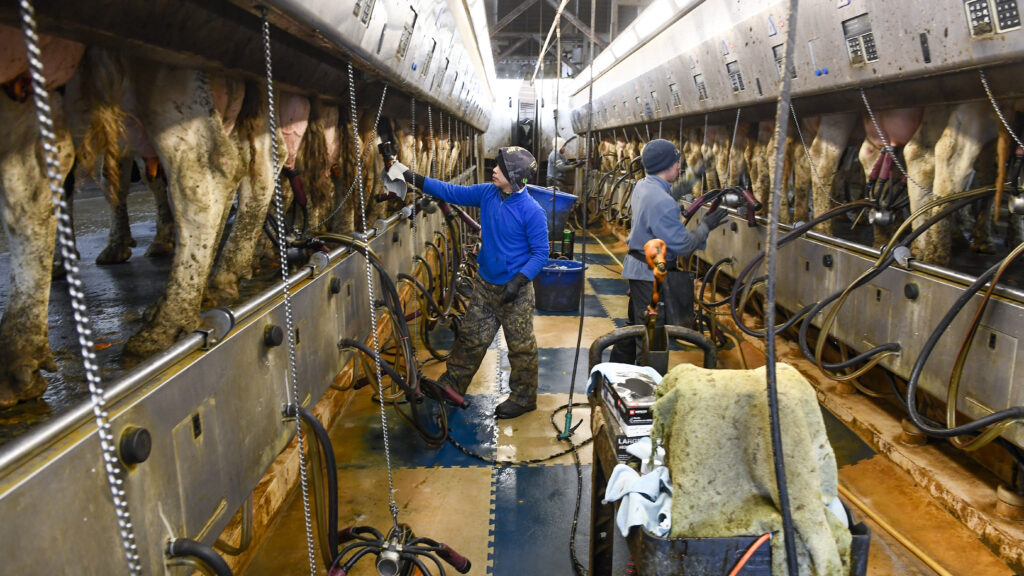WASHINGTON — The federal government will provide livestock farms as much as $28,000 apiece to bolster protective measures and testing for the avian flu virus spreading among dairy cows, officials said Friday.
The Agriculture Department also allotted $98 million to aid states restricting the interstate movement of affected cattle, and health officials announced they would put an additional $101 million toward expanded surveillance, tests, treatments, and vaccines for the virus, which has now spread to at least 40 farms in nine states, with one confirmed human transmission.
advertisement
The announcement comes amid increasing calls from infectious disease experts and public health officials for a clear picture of the virus’ spread and the risk it might pose. While officials maintain that the risk of spread to the general public is still very low, farmworkers are repeatedly exposed to potentially sick cows. Yet early efforts by federal and state health officials to shore up protective measures have had limited success.
Since a federal testing order was issued April 29, “approximately 80” cows have been tested for the virus, USDA Secretary Tom Vilsack said. “I don’t have the number of positives.”
Affected farmers could receive thousands of dollars over the next 120 days to provide personal protective equipment to workers, ship onsite tests to federal labs, safely dispose of contaminated products, and call in veterinary care. Workers could also be compensated for enrolling in bird flu studies led by the Agriculture Department and the Centers for Disease Control and Prevention.
advertisement
Separately, the USDA said it will compensate farms for lost product due to H5N1 contamination. The funds will draw from an existing emergency assistance program usually used for culling sick poultry and other livestock.
“Dairy cows that have H5N1 generally recover well and there’s little mortality associated with this disease. It does dramatically limit milk production, which can cause economic loss for producers with affected premises,” Vilsack told reporters. “We want to support farmers…to offset some of those losses.”
The CDC also said it “has identified an additional $93 million” to build lab capacity, scale up wastewater and exposure surveillance, and boost genomic sequencing. The Food and Drug Administration announced an additional $8 million will go toward bolstering testing and surveillance of the commercial milk supply. The funds, officials said in the statement, “may also allow the FDA to partner with universities on critical research questions.”
Health officials have been preparing for “an avian influenza outbreak of this kind” for 20 years, Health and Human Services Secretary Xavier Becerra said.
“It’s critical that we are well positioned to test, treat, prevent, this virus from spreading. I think that’s clear in everything we’re saying,” he said.
The funds announced Friday will be channeled to farms with confirmed cases of H5N1, though CDC separately on Monday urged all farms and slaughterhouses to provide protective gear to workers.
“We recognize that from a worker safety perspective, there can be risks even before the herd is confirmed to be positive,” CDC Deputy Director Nirav Shah said Friday.
Yet there is no mechanism to require workers to wear protective equipment, or test and participate in studies.
“In terms of farmworkers, that really is a voluntary circumstance,” said Vilsack. “I’m sure if they’re willing to work with CDC, I’m sure CDC would be happy to oblige.”

